The term “school improvement” is misleading because effective improvement efforts don’t happen at schools in isolation. Instead, they are the result of system-level changes that require support and cooperation from state and local education agencies. A primary reason for the “mixed results” found in most studies of school improvement efforts is that states, districts, and schools vary widely in their capacities and willingness to support these efforts. In fact, most states acknowledge that they lack expertise for supporting school improvement (Rentner, Frizzell, & Kober, 2017; Tanenbaum, Boyle, Graczewski, James-Burdumy, Dragoset, & Hallgren, 2015) and many districts also lack that expertise.
Schools that have successfully improved were part of a more coherent overall district and state strategy and implementation for supporting and turning around the school. The improvement strategies were created and pursued in a collaborative, coordinated manner, with staff in schools, the district, and the state working together. Less effective School Improvement Grants (SIG) schools were more likely to report that the support they received from either state or local entities emphasized grant compliance, auditing requirements, or job protection. (Council of Great City Schools, 2015).
How can states and districts support school improvement? By building a network of stakeholder groups dedicated to working collaboratively to turn around low performing schools. This begins with states and districts building relationships with schools and identifying their diverse needs, and then providing multiple, highly individualized supports based on that “diagnosis” (The Center on School Turnaround, 2014; Shea & Liu, 2010). The source of supports for school improvement will depend on the location of the capacity within the system (e.g. state, district, and/or external partner).
DISTRICTS
Most practitioners and growing research supports the idea that districts need to dedicate an office or executive level leader whose role and concomitant authority is to insure that each school receives the various and individualized supports it may require (Center for School Turnaround, 2014; Morando Rhim, 2011; Shea & Liu, 2010). In addition to a clear, coherent, and coordinated district plan for turning around the lowest-performing schools, there is an equally important need for a strong commitment to comprehensively executing the plan (Council of Great City Schools, 2015).
Looking back, SIG assumed that schools could improve by granting them autonomy and flexibility (e.g. staffing, budgeting, programming, or scheduling) from district policy. While the autonomy and flexibility are necessary, they are not sufficient. In the absence of communication, actual supports and other guidance, schools did not improve. Going forward, it makes more sense to consider how to provide schools autonomy and flexibility, in addition to figuring out how the district needs to change to support improvement. In future efforts, we should be looking for schools to improve along with and because of their district. If successful, the improvement efforts undertaken at one or a few schools can be considered in other schools that might benefit from a new relationship with the district.
EXTERNAL PARTNERS
Research suggests that external partners can help jump start school improvement, but not all do. The literature suggests that layering multiple partner organizations tends to be a less effective approach (Shea & Liu, 2010). Chester and White (2017) note that external partners also can provide political insulation and durability for radical change. Therefore, choosing a high quality outside partner is a crucial step in the school improvement process. Effective partners should be able to demonstrate experience working in similar contexts and a track record of successfully improving student achievement (Kaufman, Grimm, & Miller, 2012). Effective outside partners also will need to have an exit strategy. This is key because while an outside partner may be able to jump-start improvement, local school leaders and teachers need the capacity to sustain it (The Century Foundation, 2015; Kaufman, Grimm, & Miller, 2012).
THE SYSTEM
Regardless of the role they play in the system, all stakeholders must be clear about who is responsible for achieving results, and what happens if goals are not accomplished (Chester & White, 2017). For improvement to work, leaders at each level must make school improvement a priority, and keep it a priority, even in changing political winds. These leaders need adequate authority and accountability to exercise change (Shea & Liu, 2010). Supports that fail to address local gaps in capacity, improve operating conditions for teachers and principals, or build stakeholder support are unlikely to be successful (Jochim, 2016).
This is part of a series of articles detailing and providing examples from each of these components. Other articles in the series:
- Overview
- Supporting Structures and Systems
- Culture Shifts
- Turnaround Leadership
- Instructional Transformation
- Talent Management
By Bradford R. White, Interim Director, Illinois Education Research Council (IERC) and David Osta.
References
The Center on School Turnaround. (2017). Four domains for rapid school improvement: A systems framework. The Center for School Turnaround at WestEd. San Francisco, CA: WestEd.
Hess, F. M., & Eden, M. (2017). The Every Student Succeeds Act: What It Means for Schools, Systems, and States. Harvard Education Press. 8 Story Street First Floor, Cambridge, MA 02138.
Jochim, A. (2016). Measures of Last Resort: Assessing Strategies for State-Initiated Turnarounds. Linking State and Local School Improvement. Center on Reinventing Public Education.
Kaufman, T. E., Grimm, E. D., and Miller, A. E. (2012). Collaborative School Improvement: Eight Practices for District-School Partnerships to Transform Teaching and Learning. Harvard Education Press. 8 Story Street First Floor, Cambridge, MA 02138.
Morando Rhim, L. (2011). Learning How to Dance in the Queen City: Cincinnati Public Schools’ Turnaround Initiative. University of Virginia Darden/Curry Partnership for Leaders in Education.
Rentner, D. S., Frizzell, M., and Kober, N. (2017). Planning for Progress: States Reflect on Year One Implementation of ESSA. Center on Education Policy. Retrieved from: https://www.cep-dc.org/displayDocument.cfm?DocumentID=1487
Shea, J. & Liu, M. (2010). School Improvement Grants: Take 2; Lessons learned from round 1. Mass Insight Education. Retrieved from http://www.massinsight.org/publications/stgresources/125/file/1/pubs/2010/12/07/STG_- _School_Improvement_Grants_Take_2_Dec_2010__.pdf
Tanenbaum, C., Boyle, A., Graczewski, C., James-Burdumy, S., Dragoset, L., & Hallgren, K. (2015). State capacity to support school turnaround. Mathematica Policy Research. Retrieved from https://ies.ed.gov/ncee/pubs/20154012/.
